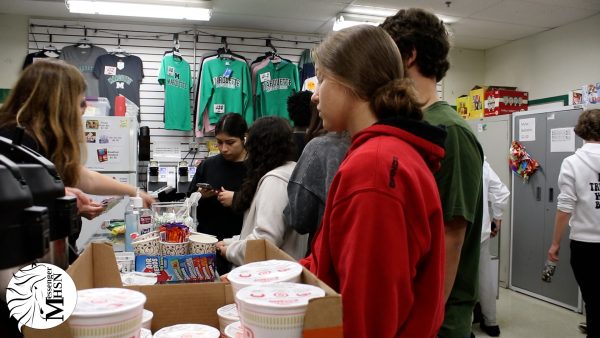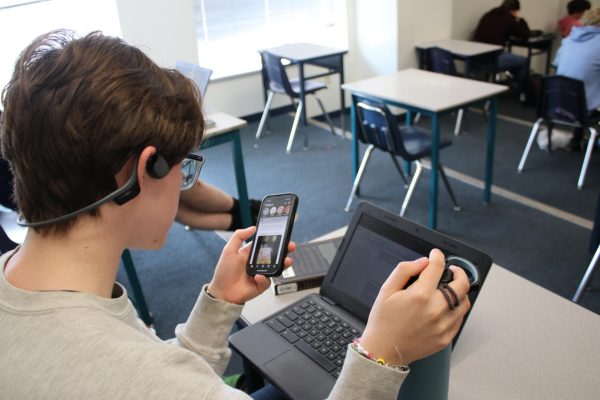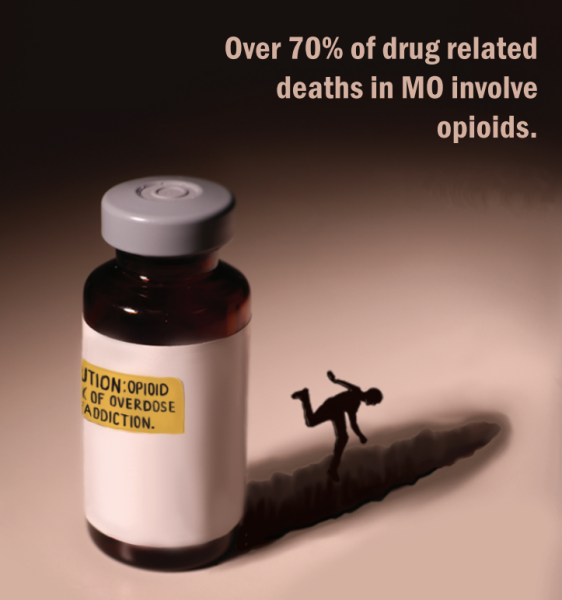Youth experience increased mental health struggles, CDC reports
Media by Emma Tyulyayev
A recent report by the CDC details that nearly 42% of high school students have experienced persistent feelings of sadness and hopelessness, indicating a 14% increase in the past decade.
Sofia Maciariello, junior, said at a young age she realized she didn’t fit in with the “norm” of her peers at that time because she struggled with feelings of frustration and severe depression.
“For quite some time I tried to figure out how to manage and how I felt about it, and overall try to be okay and realize it was normal and that it wasn’t that I was weird,” Maciariello said.
Elyse Maciariello, Sofia’s mother, said Sofia would have a lot of emotional breakdowns when something out of her routine occurred.
At that point, Elyse said she allowed Sofia to cope through multiple professionals while knowing the most difficult thing about the situation was that it is something her daughter will have to deal with for her whole life.

“There are going to be good days, and there are going to be bad days,” Elyse said. “ I just have to be there to support her when she needs the support.”
By age 12, Maciariello said she had to figure out how exactly to deal with her mental health while also balancing school. In order to cope with her struggles, Maciariello said she found a strong connection with music, art and track.
While Maciariello learned strategies to help with her mental health, youth mental health has continued to worsen, according to the new CDC Youth Risk Behavior Survey. The report details that nearly 42% of high school students have experienced persistent feelings of sadness and hopelessness, indicating a 14% increase in the past decade.
In addition to an increasing trend of mental health concerns among youth, a record high number of teen girls are experiencing persistent sadness and hopelessness, with nearly a 60% increase.
Maciariello said she attributes the increasing unhappiness in teen girls to the greater normalization of mental health. People feel more comfortable being open about their sadness and stressors.
Everyday high school struggles—school work, hard classes and high school drama— also contribute to something of an emotional roller coaster, Maciariello said.
“I bring myself to a very high standard because I find my worth a lot in grades just because, to me, that is what society bases it off of, even though I know in the back of my head that’s not always correct,” Maciariello said.
During school, Maciariello said she would listen in on Mustangs for Mental Health meetings. Mustangs for Mental Health is a club that advocates for mental health awareness and suicide prevention.
“You don’t even have to be a participant, just like listening to things because they can be helpful even if you’re through it,” Maciariello said. “Multiple people, whether you see it or not, are going through that stuff for sure.”
Katherine Bauman, sponsor of Mustangs for Mental Health, said much of the increase in sadness in teen girls can be attributed to social media, as images posted on various platforms can create unrealistic standards for girls.
“Social media can be used to bully or exclude others and make it appear as though your peers are having a fantastic time doing whatever they are doing, and in reality, you are only seeing a split second of what is actually happening,” Bauman said.
These posts also can make girls wonder why they weren’t invited, Bauman said.
In order to combat the rise in sadness, Mustangs for Mental Health tries to promote activities for inclusion, Bauman said.
“For our Valentine’s meeting, we had candy grams that we sent, and they had to be sent with a special message, like what they appreciate about someone else, as a way to reach out to those who might need a little pick me up in their day,” Bauman said.
Bauman said students should regularly check-in on friends to make sure they are okay.
Dr. Lisa Giles, maternal and child health epidemiologist, works as the Youth Risk Behavior Survey (YRBS) coordinator for the Missouri Department of Health and Senior Services (DHSS). She examines the determinants that impact the health and wellbeing of adolescent populations in Missouri.
The YRBS survey collects self-reported health information from high school and middle school students. Dr. Giles said these statistics are useful because she can compare them to national data.
Dr. Giles said the CDC report is looking at the 2021 YRBS data from high school students across the United States. The data is showing alarming increases across different topics such as feeling sad or hopeless, having suicidal thoughts, and sexual violence, especially among females.
“The article encourages schools to take the time to develop or improve school-based activities in order to make a difference in their students’ lives,” Dr. Giles said.
There are going to good days, and there are going to be bad days. I just have to be there to support her when she needs the support.
— Elyse Maciariello
The Missouri DHSS and the CDC collaborate on a number of projects and have programs that routinely collaborate with a number of partners across the State to address adolescent health issues, Dr. Giles said.
In order to combat the mental health crisis among teens, Dr. Giles said schools can work to foster school connectedness so students can feel close to their community and have someone to reach out to in times of need.
She also said anyone in a time of mental health crisis can call the 988 Suicide and Crisis Lifeline.
“While the data in this report is concerning, DHSS has programs and initiatives aimed at improving the physical and emotional wellbeing of adolescents,” Dr. Giles said.
Elyse Maciariello said she would advise anyone going through what she did to have open communication and to find what works best for them and their family, even if the solution doesn’t appear instantly.
“Sometimes what works for a little while might not work for long term,” Maciariello said. “It can become very frustrating to where you just want to give up, but you don’t give up, it’s not a waste of time, you just understand that it’s something that this child has to live with, and as a parent you have to find a way to support them.”
Your donation will support the student journalists of Marquette High School. Your contribution will allow us to purchase equipment and cover our annual website hosting costs. You may become a PATRON by making a donation at one of these levels: White/$30, Green/$50, Blue/$100. Patron names will be published in the print newsmagazine, on the website and once per quarter on our social media accounts.

Willem Hummel, Senior is a News Editor for the Marquette Messenger. This is his third year on staff, he has been involved in the Track Team, and Cross...

Akhila Swarna, senior, is the Associate Editor of the Marquette Messenger. She enjoys participating in Speech and Debate, HOSA, and Red Cross. Outside...

Emma Tyulyayev is an Illustrator for the Marquette Messenger. This is her second year on staff. After school, she enjoys driving around and going on frequent...













